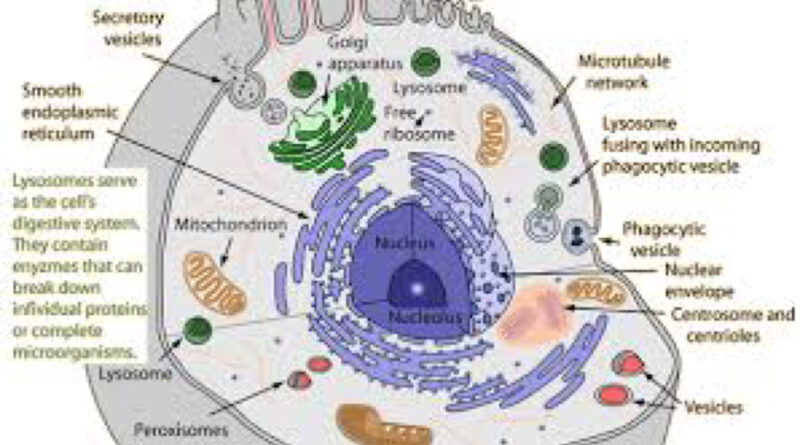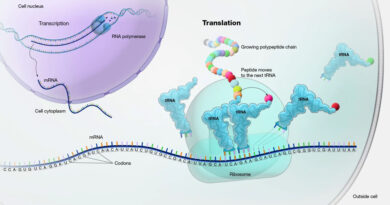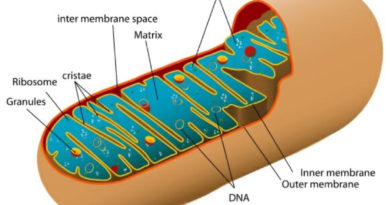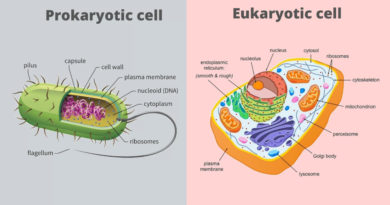Lysosomes: The Digestive System of the Eukaryotic Cell
Lysosomes are membrane-bound organelles found in eukaryotic cells, serving as the cell’s digestive system. These versatile and essential components play a crucial role in cellular homeostasis by breaking down various biomolecules and recycling cellular waste. Their function and importance are integral to understanding cellular processes and overall health.
Structure and Composition
Lysosomes are spherical vesicles containing hydrolytic enzymes capable of breaking down proteins, nucleic acids, lipids, and carbohydrates. These enzymes operate optimally at an acidic pH, maintained by proton pumps in the lysosomal membrane that actively transport hydrogen ions into the lysosome. This acidic environment is critical for enzyme activity and the degradation process.
The lysosomal membrane is specialized to protect the rest of the cell from the harsh conditions within the lysosome. It contains glycoproteins, which help to stabilize the membrane and prevent autolysis, where the lysosome would otherwise digest itself.
Formation and Biogenesis
Lysosomes are formed through a complex process involving the endoplasmic reticulum (ER) and the Golgi apparatus. Enzymes destined for the lysosome are synthesized in the rough ER, modified in the Golgi apparatus, and then packaged into vesicles. These vesicles bud off from the Golgi and eventually mature into fully functional lysosomes.
Functions of Lysosomes
1. Intracellular Digestion: Lysosomes digest macromolecules delivered to them via endocytosis, phagocytosis, and autophagy. Endocytosis involves the uptake of extracellular materials, while phagocytosis engulfs larger particles such as bacteria. Autophagy is the process where the cell degrades its own components, which is crucial for removing damaged organelles and proteins.
2. Recycling Cellular Components: By breaking down cellular waste, lysosomes facilitate the recycling of components, providing building blocks for new cellular structures. This recycling process is vital for cellular renewal and adaptation to changing conditions.
3. Defense Mechanisms: Lysosomes are essential for the immune response. In phagocytic cells, such as macrophages and neutrophils, lysosomes digest pathogenic bacteria and viruses, thus protecting the organism from infections.
4. Apoptosis: Lysosomes contribute to programmed cell death by releasing their enzymes into the cytoplasm, leading to the orderly breakdown and removal of cellular components. This process is crucial for development and the maintenance of tissue homeostasis.
Lysosomal Storage Diseases
Mutations or deficiencies in lysosomal enzymes can lead to lysosomal storage diseases (LSDs). These genetic disorders result in the accumulation of undigested macromolecules, causing cell dysfunction and severe clinical symptoms. Examples include Tay-Sachs disease, Gaucher disease, and Niemann-Pick disease. Research into these disorders has provided significant insights into lysosomal function and the importance of proper cellular waste management.
Conclusion
Lysosomes are indispensable to the eukaryotic cell, functioning as its digestive and recycling system. They ensure cellular homeostasis by degrading and recycling biomolecules, defending against pathogens, and facilitating programmed cell death. Understanding lysosomal function and the consequences of their dysfunction continues to be a vital area of research in cell biology and medicine. As we unravel more about these remarkable organelles, we gain deeper insights into cellular health and disease mechanisms, paving the way for innovative therapeutic strategies.



